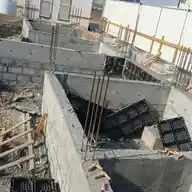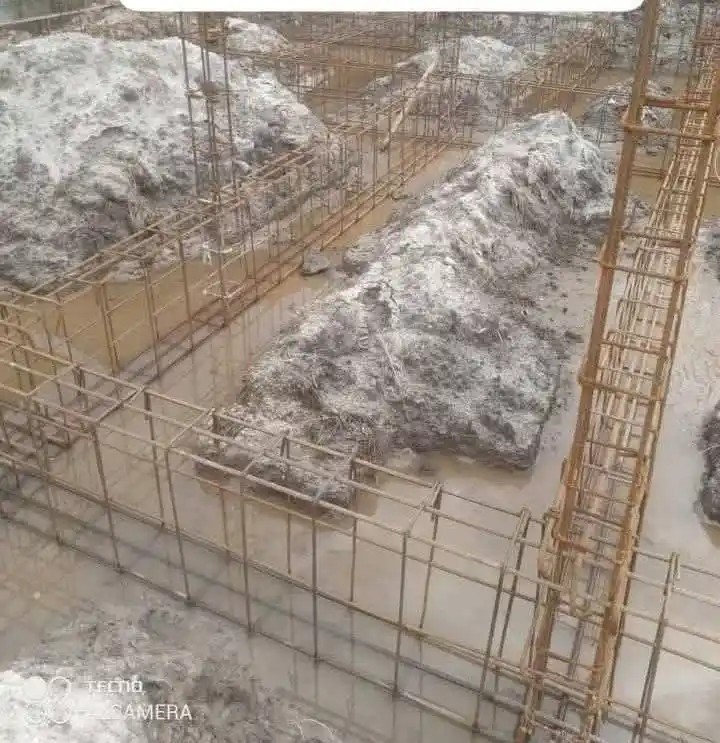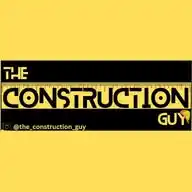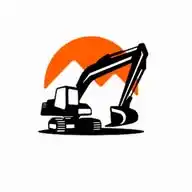
WASOPEY PROJECTS 🏗️🏠✍️
4 subscribers
About WASOPEY PROJECTS 🏗️🏠✍️
Think Construction Think WASOPEY PROJECTS ENGINEERING SERVICES We are basically into Design and building construction, fabrications, and installations of any civil structures, etc. Enquiries: Send a DM or call/WhatsApp 08051114995 / 07066174841 You can visit our website to get more insight into all we do… https://www.wasopeyengineering.com.ng
Similar Channels
Swipe to see more
Posts

HIDDEN COSTS TO WATCH OUT FOR DURING CONSTRUCTION Here’s a comprehensive list of “Hidden Costs to Watch Out for During Construction”—these often surprise clients and can derail your budget if unaccounted for: 1. Site Preparation Costs Clearing, grading, and leveling the land. Soil testing or geotechnical analysis. Demolition of existing structures (if any). 2. Foundation Surprises Rock excavation or removal of tree stumps. Extra reinforcement due to poor soil. Water drainage or dewatering in waterlogged areas. 3. Approval & Regulatory Fees Building permits and government levies. Environmental impact assessments (if required). Development control penalties or delays. 4. Utility Connections Cost of bringing electricity, water, and sewerage to site. Transformer installation (in new estates or rural areas). Borehole or water tank systems. 5. Changes in Material Prices Market fluctuations in cement, iron rods, tiles, etc. Scarcity of specific imported finishes or fittings. 6. Design Changes (Variations) Client-requested changes after work has started. Upgrading materials or layout mid-project. Custom or luxury finishes not included in original estimate. 7. Labor Overruns Extended work time due to weather or delays. Skilled labor costs for specialized installations. Overtime or weekend work fees. 8. Waste & Material Loss Breakages, theft, or excess material not accounted for. Cost of disposal for construction waste. 9. Site Security Hiring security guards or installing temporary fencing. Losses from vandalism or theft of equipment/materials. 10. Furniture & Finishing Touches Wardrobes, cabinets, kitchen fittings. Light fixtures, curtain rails, water heaters—often excluded in builder’s estimate. 11. Landscaping & External Works Driveways, walkways, gates, fences, and outdoor lighting. Greenery or paving not factored into the initial construction cost. 12. Professional Fees Architect, structural engineer, quantity surveyor, and legal consultants. Project management or supervision costs. Pro Tip: Always keep a 10–15% contingency budget for hidden costs.


HOW TO SELECT TYPE OF FOUNDATION IN WATER LOGGED AREA Selecting the right type of foundation for a water-logged area requires careful consideration of several factors. Here's a step-by-step guide to help you make an informed decision: FACTORS TO CONSIDER 1. WATER TABLE LEVEL: Determine the water table level and its fluctuation. 2. SOIL TYPE: Identify the type of soil and its properties (e.g., clay, sand, silt). 3. LOAD-BEARING CAPACITY: Calculate the load-bearing capacity of the soil. 4. STRUCTURAL REQUIREMENTS: Consider the type of structure, its weight, and loads. FOUNDATION TYPES FOR WATER-LOGGED AREA'S 1. DEEP FOUNDATIONS: Suitable for areas with high water tables or poor soil conditions. ✓ Piled foundations: Transfer loads to deeper, more stable soil layers. ✓ Drilled shafts: Similar to pile foundations, but with a larger diameter. 2. RAFT FOUNDATIONS: Suitable for areas with poor soil conditions or high loads. ✓ Mat foundations: A thick, continuous slab that distributes loads evenly. 3. SPECIALIZED FOUNDATIONS: Consider using specialized foundations like: ✓ Floating foundations: Designed for areas with very poor soil conditions. ✓ Compensated foundations: Use a combination of deep and shallow foundations. DESIGN CONSIDERATIONS 1. WATERPROOFING: Ensure the foundation is designed to withstand water pressure and prevent water ingress. 2. DRAINAGE: Provide adequate drainage systems to prevent water accumulation. 3. SOIL STABILIZATION: Consider soil stabilization techniques, such as grouting or soil nailing, to improve soil properties. WHAT TO DO ⏩ CONSULT EXPERTS 1. GEOTECHNICAL ENGINEERS: Consult with geotechnical engineers to determine the soil properties and recommend suitable foundation types. 2. STRUCTURAL ENGINEERS: Work with structural engineers to design the foundation and ensure it meets structural requirements. #FoundationDesign #WaterLoggedAreas #ConstructionTips #CivilEngineering #BuildingOnWaterloggedSoil #FoundationTypes #SoilMechanics #Waterproofing #DrainageSolutions #ConstructionChallenges #EngineeringSolutions #BuildingStrong #FoundationRepair #WaterDamagePrevention #ConstructionAdvice #Architecture #BuildingDesign #ConstructionIndustry #EngineeringLife #CivilEngineers #ConstructionManagement #BuildingScience #FoundationEngineering #SoilScience #WaterManagement


HOW MUCH SHOULD I CHARGE TO SUPERVISE A CONSTRUCTION PROJECT? Recently, someone reached out to ask how to price for supervising a project a 3-storey building and a filling station, all in one. And while I’d love to help everyone, here’s the truth: There’s no one-size-fits-all answer. To respond properly, I’d have to ask at least 10 questions to understand the scope, duration, location, your capacity, your role, level of involvement, and much more which is time I usually don’t have. So, I’ll use this opportunity to teach everyone who needs it the steps to do this: Let’s Talk About Pricing Yourself Properly Many young professionals struggle with pricing because they never worked under an established construction firm or mentor. Experience under a proper structure teaches you how things are done: • How to break down a project • How to structure pricing • How to manage timelines, deliverables, and manpower • How to communicate value to a client (You may need to pay WOli to learn all the above if you truly need them!) If you skipped that stage and jumped into freelance work or private projects, it’s normal to feel lost. But here’s a basic framework you can build on: 1. Know Your Value Start with your credentials and practical experience: • Are you a graduate (HND, BSc, MSc)? • Are you COREN-registered? • What is your skill level and site experience? • If you were employed full-time, how much would you expect to earn monthly? Example: ₦500,000, ₦800,000, or ₦1,000,000/month This gives you a baseline value of your time. 2. Understand the Project Duration Estimate how many months the project will run. Then add one extra month to accommodate delays or unforeseen circumstances. Multiply that time by your ideal monthly value. This gives you a realistic base fee. Example: 4-month project + 1 month = 5 months Monthly value = ₦500,000 Base fee = ₦500,000 × 5 = ₦2.5 million 3. Factor in Your Role and Commitment Level Ask yourself: • Will you be on-site every day or occasionally? • Are you providing only supervision, or also labour coordination, procurement, or design? • Are you responsible for quality control, client updates, payments, or permits? The more responsibility you carry, the more you should charge. 4. Know Your Client Type There are two main types of clients: • Those who know and value your work they’ve seen your past projects and want your quality. They are more likely to pay well. • Those you’re chasing—they may not value your input yet and often want to cut corners. Don’t charge the same way for both. Also, consider the scale of the project. If someone is building a ₦300 million facility, then offering you ₦150,000 for full supervision is not just disrespect its exploitation. 5. Add a Professional Markup After calculating your base fee, add a markup that reflects your brand and confidence. This is a contract, not a salary you’re being paid for results, not just presence. Instead of asking for ₦2.5 million for the projection of 5 months, do a markup of ₦1 million and add ₦500k for negotiation buffer. Total: ₦4 million 6. Determine Your Baseline Baseline is the lowest price you can accept for the project under various conditions or clauses. For example: • If I won’t be coming every day, then I can collect this much. • If you allow me to supply materials and bring labour, my supervision fee will be this. Do this analysis before you start negotiating for the work. Final Word : You must learn to: • Value your knowledge • Speak confidently about your worth • Work closely with mentors or seasoned professionals • Grow your network and reputation gradually Let’s sanitize this profession. Let’s stop cutting corners and start educating ourselves and others on how to thrive in engineering with integrity, value, and structure. I always keep it in mind that if I don’t try to help the younger generation, what do I gain?


If you're between 25-35 years old, don't make a mistake of building your dream house or luxurious mansion. While owning a big house is a great achievement, but it's not the wisest financial move if you're within that age. Instead, consider building a modest but comfortable home and investing the remaining funds in strategic assets. Spread your wealth by acquiring plots of land in strategic and promising locations, i mean locations that haven't gotten to their peak yet. Also, channel some funds into growing your business or side hustles. Diversify your income streams to ensure a steady flow of wealth. Remember, financial freedom is the ultimate goal. Aim to retire early and enjoy the fruits of your labor, wise investment is key to a secure future. Let's execute your next building project 🤝

DPM (Damp Proof Membrane) is a critical component in construction that prevents moisture from entering a building, reducing the risk of structural damage, mold growth, and indoor air quality issues. Types of DPM: Polyethylene, Polypropylene, Bitumen, Liquid-applied, and Self-adhesive. Benefits: - Reduced structural damage - Improved building durability - Enhanced indoor air quality - Reduced maintenance costs - Increased building lifespan Best practices for installation: - Select correct DPM type - Proper surface preparation - Follow manufacturer instructions - Use qualified installers - Regular inspections and maintenance WASOPEY PROJECTS 🏗️













